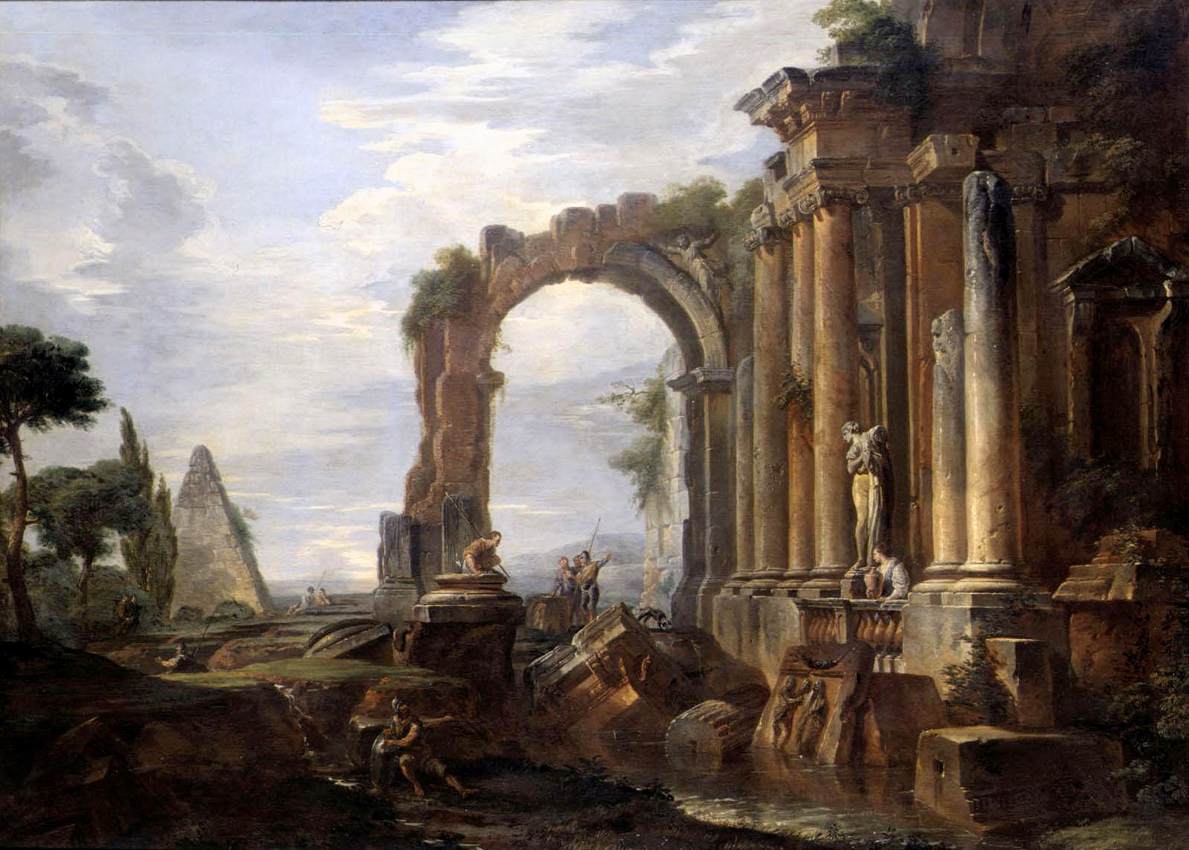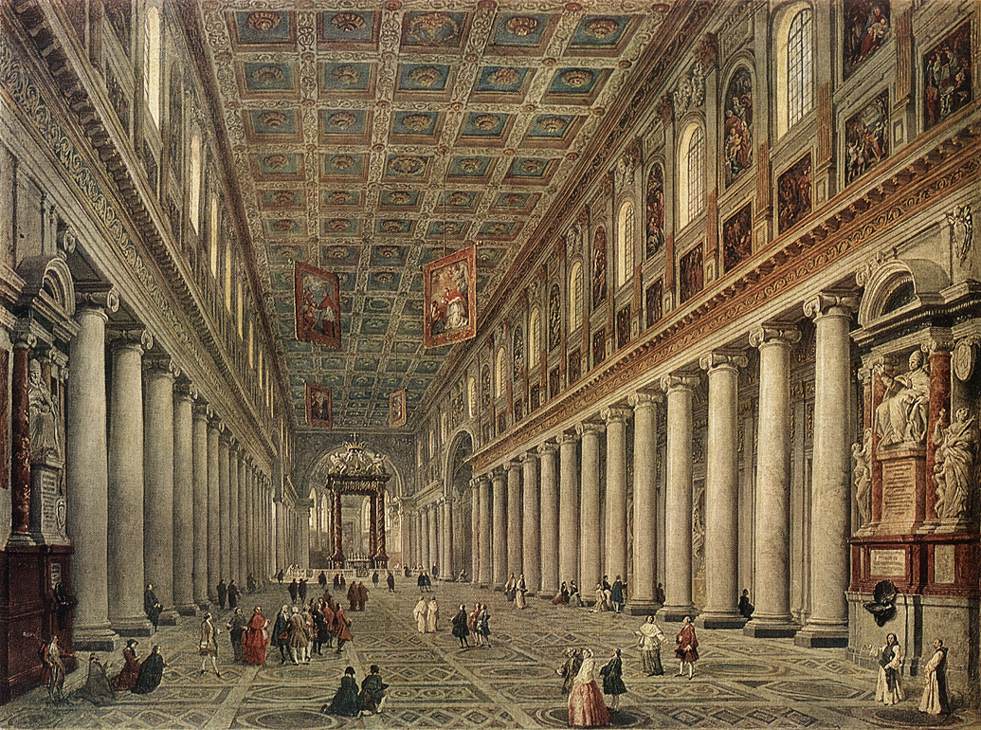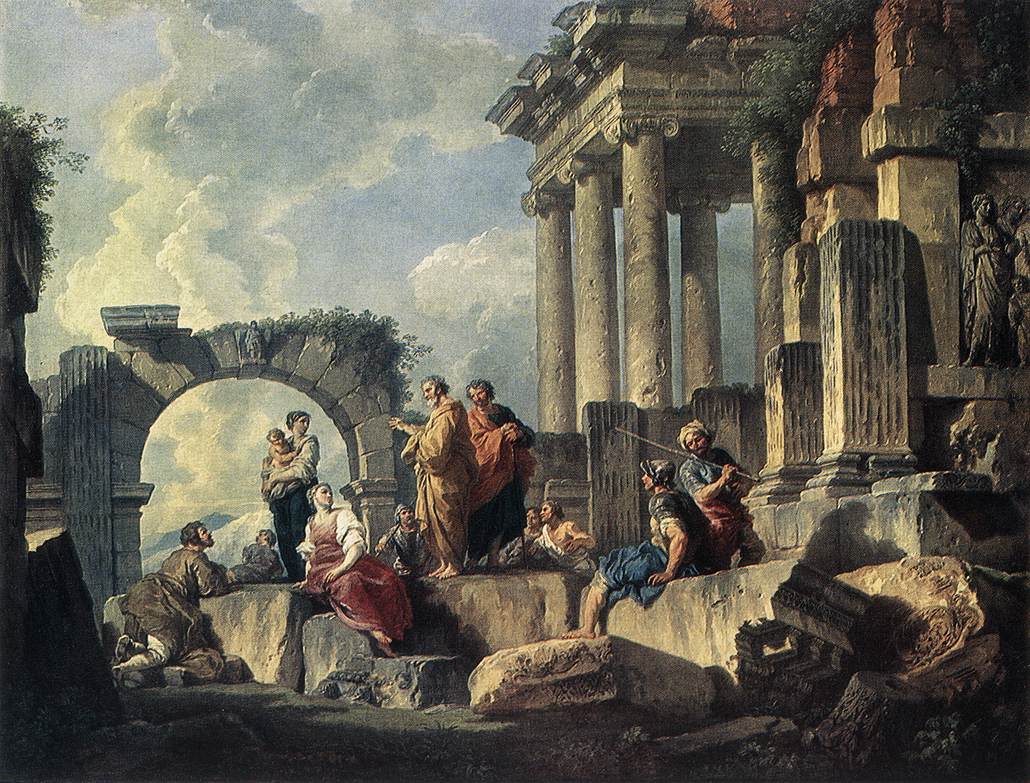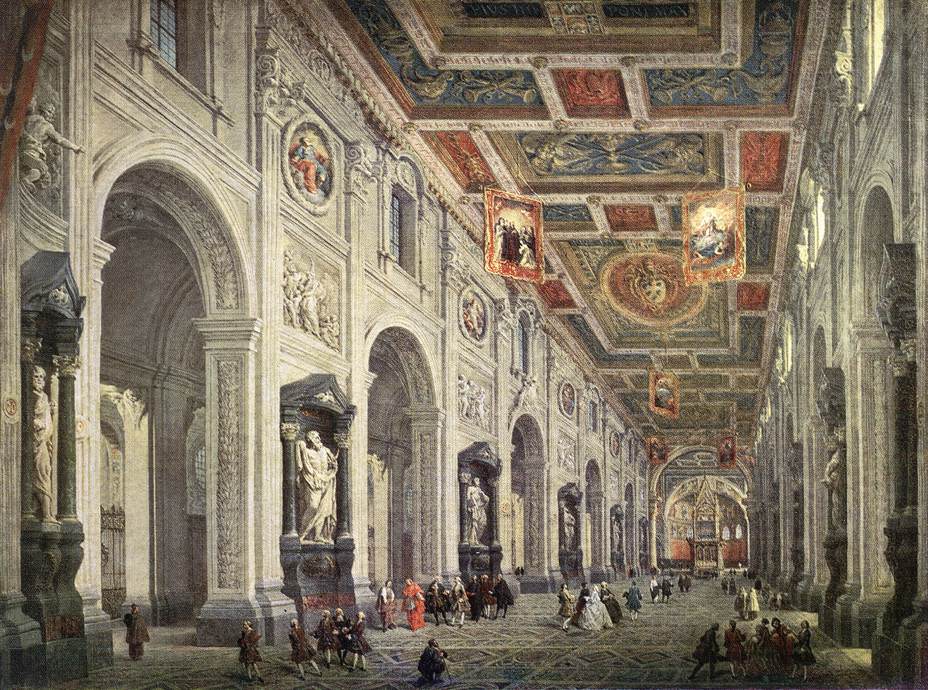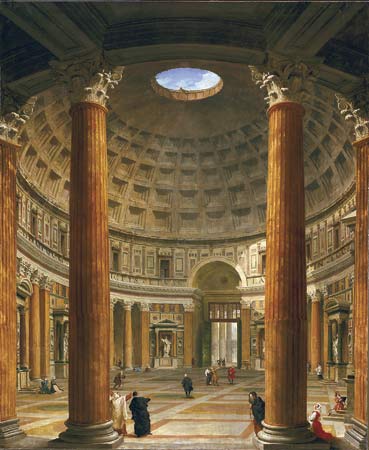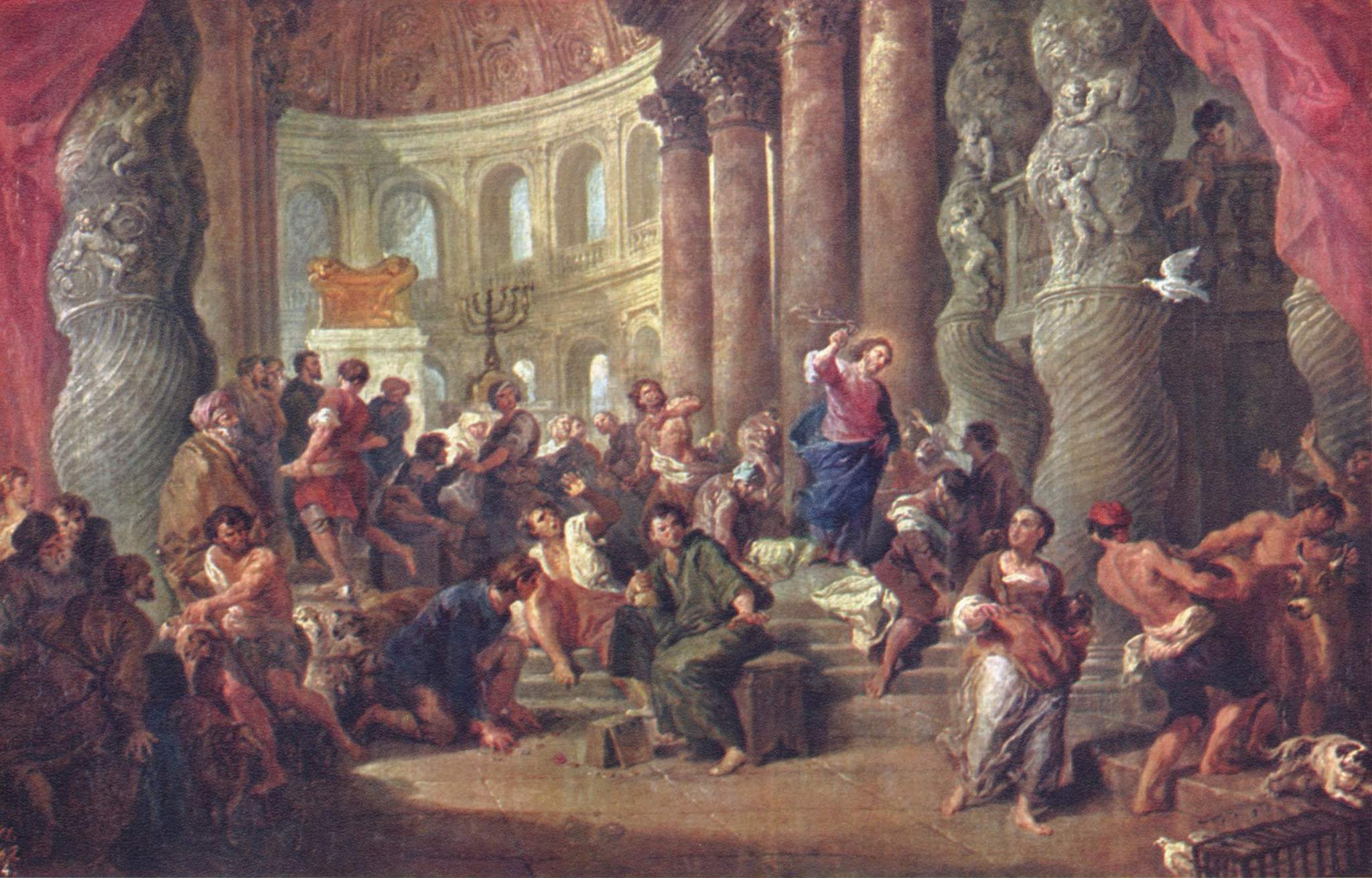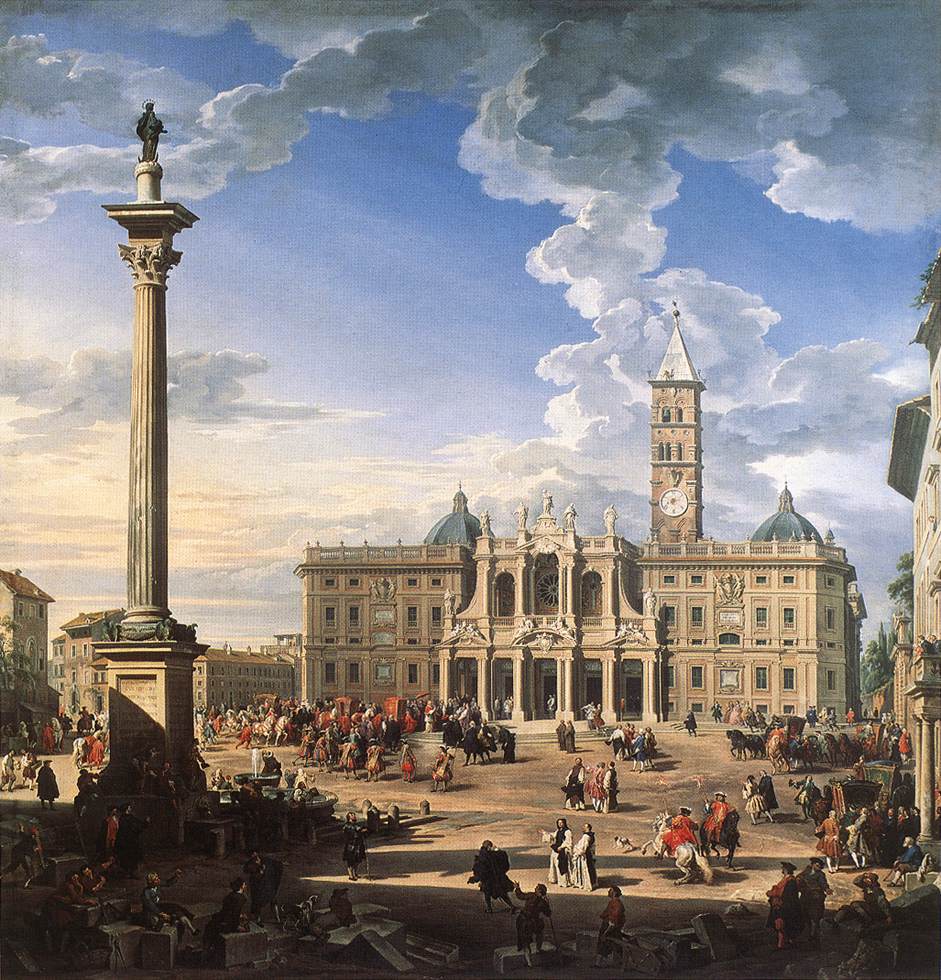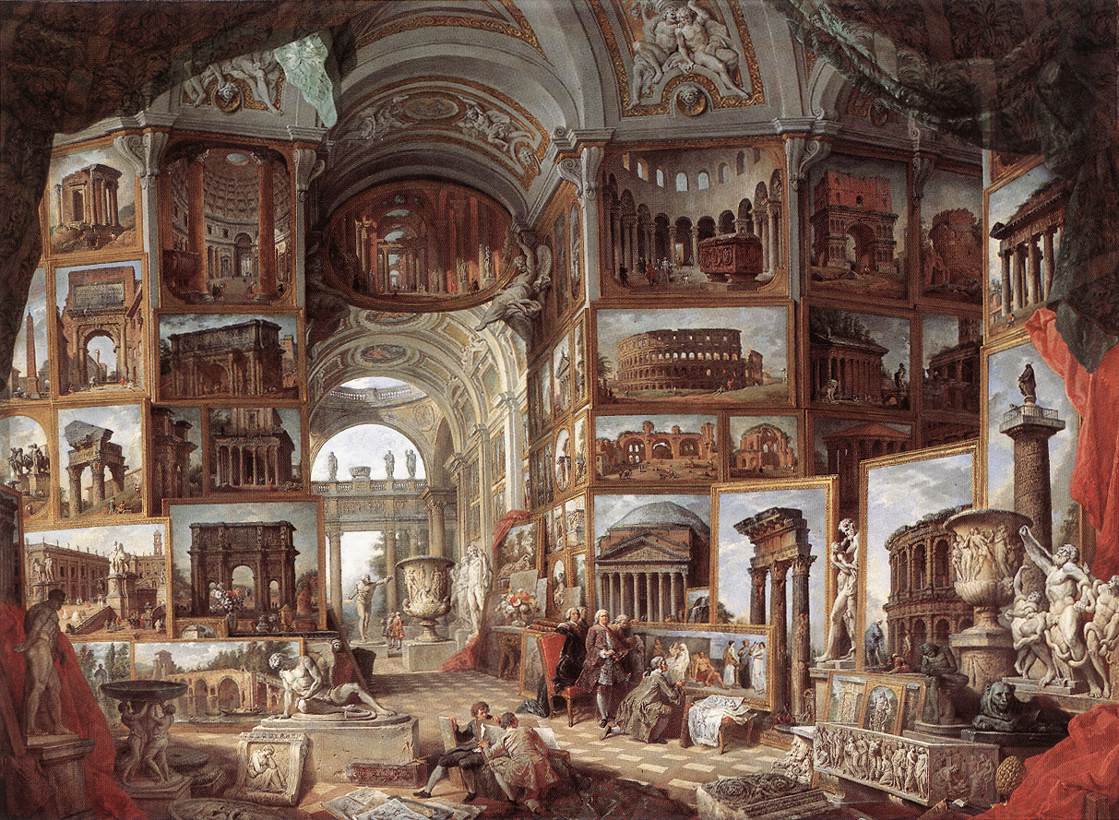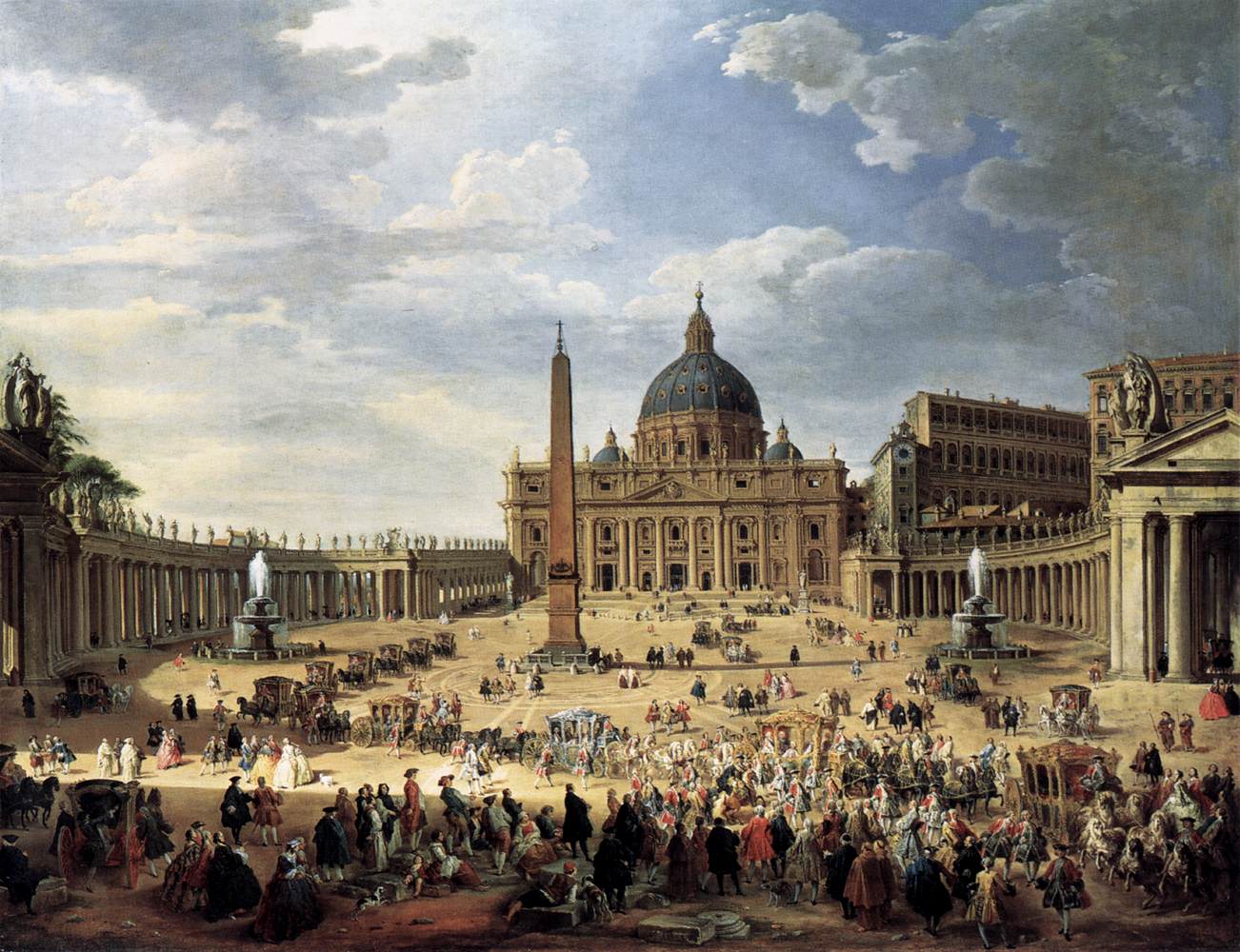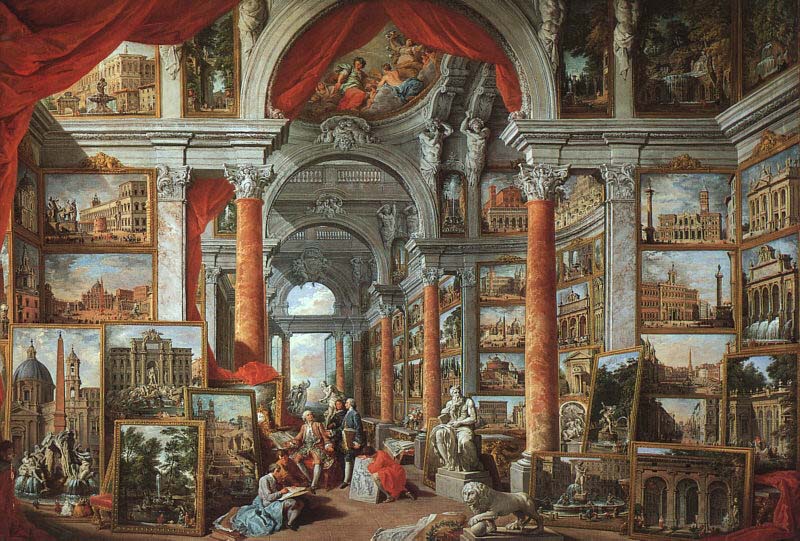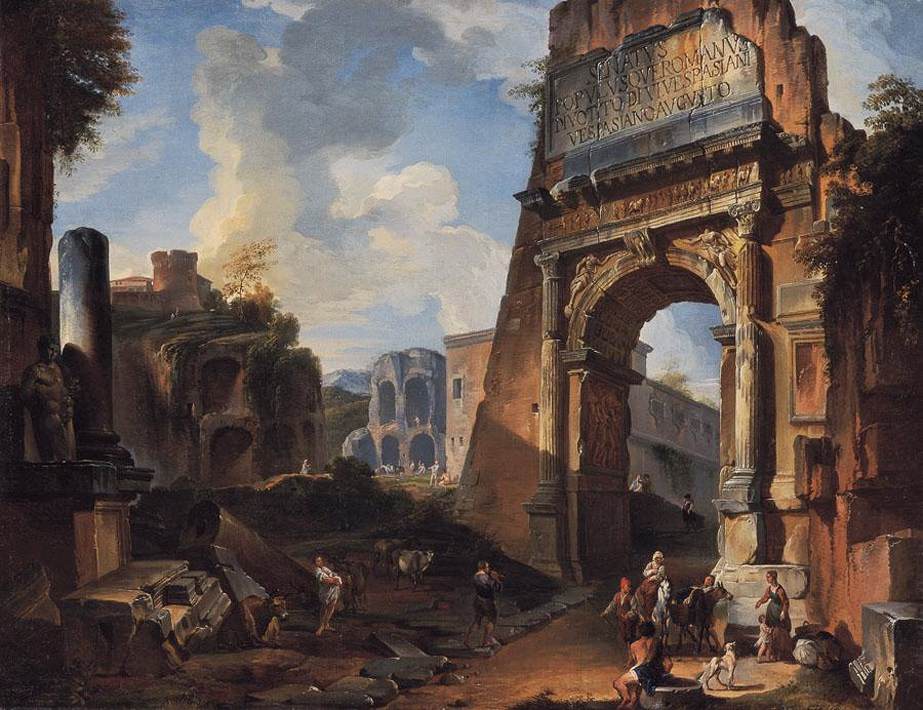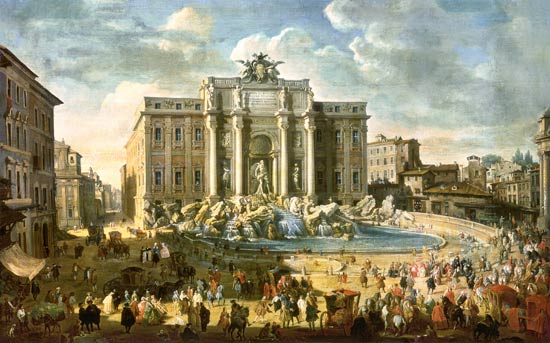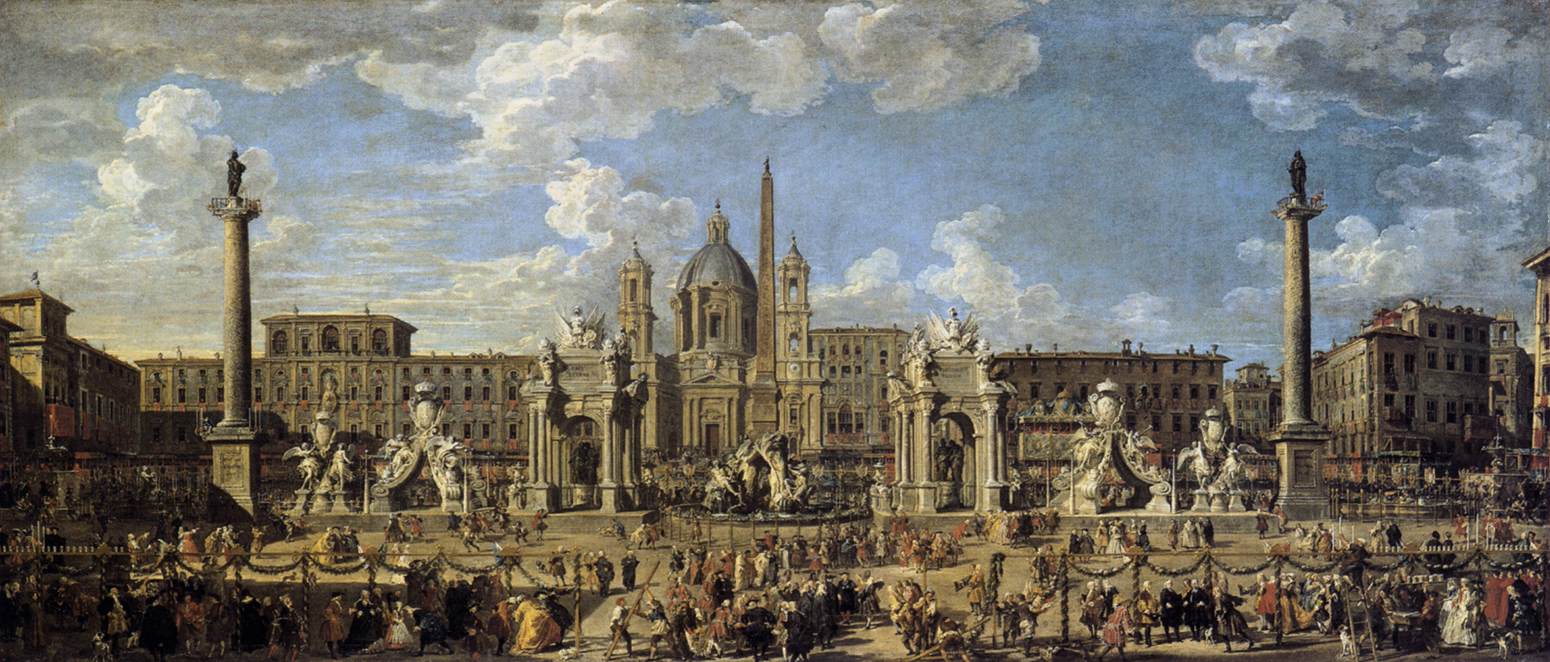<Back to Index>
- Biologist François Jacob, 1920
- Painter Giovanni Paolo Pannini, 1691
- Reichsleiter Martin Ludwig Bormann, 1900
PAGE SPONSOR
Giovanni Paolo Panini or Pannini (17 June 1691 – 21 October 1765) was an Italian painter and architect, mainly known as one of the vedutisti ("view painters").
As a young man, Panini trained in his native town of Piacenza, under Giuseppe Natali and Andrea Galluzzi, and later the stage designer Francesco Galli - Bibiena. In 1711, he moved to Rome, where he studied drawing with Benedetto Luti and became famous as a decorator of palaces, including the Villa Patrizi (1719 – 1725), the Palazzo de Carolis (1720), and the Seminario Romano (1721 – 1722). In 1719, Panini was admitted to the Congregazione dei Virtuosi al Pantheon. He taught in Rome at the Accademia di San Luca and the Académie de France, where he influenced Jean - Honoré Fragonard. In 1754, he served as the principal of the Accademia di San Luca. Panini died in Rome on 21 October 1765.
As a painter, Panini is best known for his vistas of Rome, in which he took a particular interest in the city's antiquities. Among his most famous works are the interior of the Pantheon, and his vedute — paintings of picture galleries containing views of Rome. Most of his works, specially those of ruins have a substantial fanciful and unreal embellishment characteristic of capriccio themes. Panini also painted portraits, including one for Pope Benedict XIV.
Panini's studio included Hubert Robert and his son Francesco Panini. His style would influence a number of other vedutisti, such as his pupil Antonio Joli, as well as Canaletto and Bernardo Bellotto, who sought to appease the need by visitors for painted "postcards" depicting the Italian environs.
